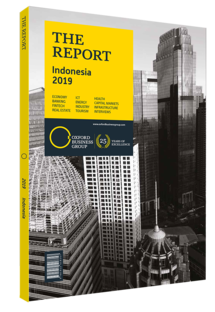Aldi Haryopratomo, CEO, GO-PAY: Interview

Interview: Aldi Haryopratomo
How can fintech enhance financial inclusion across the archipelago in the short and medium term?
ALDI HARYOPRATOMO: I see the role of fintech as the bridge between the banks and the unbanked. The advantage of fintech companies is that they are nimble in their ability to include the unbanked. Banks have been established with the specific purpose of managing risk and providing loans in a responsible manner. For these institutions to be able to reach the unbanked, it is inevitable that they will need to partner with various fintech players. For example, Bank Negara Indonesia faced challenges in dispersing the government-subsidised Kredit Usaha Rakyat loan but GO-PAY helped connect the bank to our food delivery merchants.
People take advantage of the limited financial literacy in rural areas. For example, someone might save money for a pilgrimage to Mecca and then be unable to go, because the company that collected the money was part of a Ponzi scheme. Fintech can help solve this issue, and people can save money through these apps. Banks have specific core capabilities, notably the depth within each industry they operate in. For instance, Bank Tabungan Negara issues housing loans. Fintech players will likewise be able to reach out to consumer segments that banks do not include.
In what way do you evaluate the potential for QR code payments to reach critical mass?
HARYOPRATOMO: Before QR code payment systems, most digital payments were only available online. For example, GO-PAY was only available within the app. This is the first time that the online and the offline worlds will have the ability to connect.
The large base of merchants working with GO-PAY, which is currently close to 400,000 on our systems, offers promising potential for the QR code payment ecosystem. The traction will be even higher once fintech players begin moving out of big cities and start expanding to reach second– and even third–tier cities.
Right now, we are in the early adoption stage. To determine how to change consumer behaviour, we must determine what the primary inconvenience is. For example, GO-PAY started with simply paying for a ride. The primary inconvenience was that drivers did not have change. For our food delivery service, restaurants generally do have change but drivers may not have enough on hand to pay for the food. We are also gaining a lot of traction offline as people who already have an online balance see the many diverse benefits of not having to constantly handle cash.
What regulatory changes are necessary to continue boosting the overall growth of Indonesia’s burgeoning fintech industry?
HARYOPRATOMO: The fintech industry is regulated by two different bodies: the Financial Services Authority regulates fintech lending and crowdfunding, while Bank Indonesia regulates payments. Thus far, regulators have taken the right steps, but much can be improved in terms of giving companies more room to experiment and innovate. Regulators should implement a more risk-based approach instead of using a onesize-fits-all model for the whole industry.
One example of this approach is the classification of banks into tiers based on their ability to safeguard against risk, where tier four is the highest. The higher the tier, the more open the central bank is to experimentation. The same principle could be applied to players in the fintech payment space: the higher the tier, the more risks the players are able to take without jeopardising their respective ecosystems.
As an emerging industry, the regulatory framework for fintech is constantly modified. New regulations take into consideration association’s suggestions, ascertaining that new changes benefit the growth of the sector as a whole. However, ministries often need to be increasingly better aligned, especially when it comes to the management of consumer databases.
You have reached the limit of premium articles you can view for free.
Choose from the options below to purchase print or digital editions of our Reports. You can also purchase a website subscription giving you unlimited access to all of our Reports online for 12 months.
If you have already purchased this Report or have a website subscription, please login to continue.

